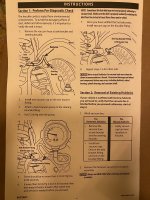knaffie
Tremoraholic
- Joined
- Sep 22, 2021
- Messages
- 536
- Reaction Points
- 1,047
- Location
- Zephyr Cove, NV
- Current Ride
- 2022 F350
135,000 miles of hard winters (lots of 4x4 use) and lots of towing heavy on my 2015 F350 and zero troubles with the hubs or unit bearings. The original unit bearings were still tight when I sold it. They're not garbage.











